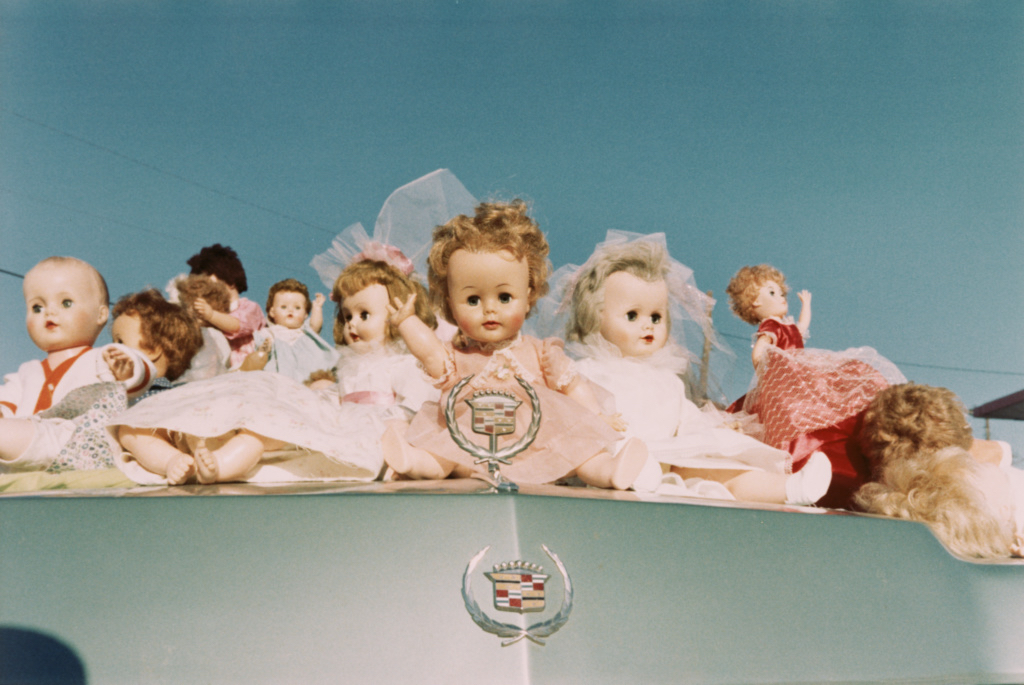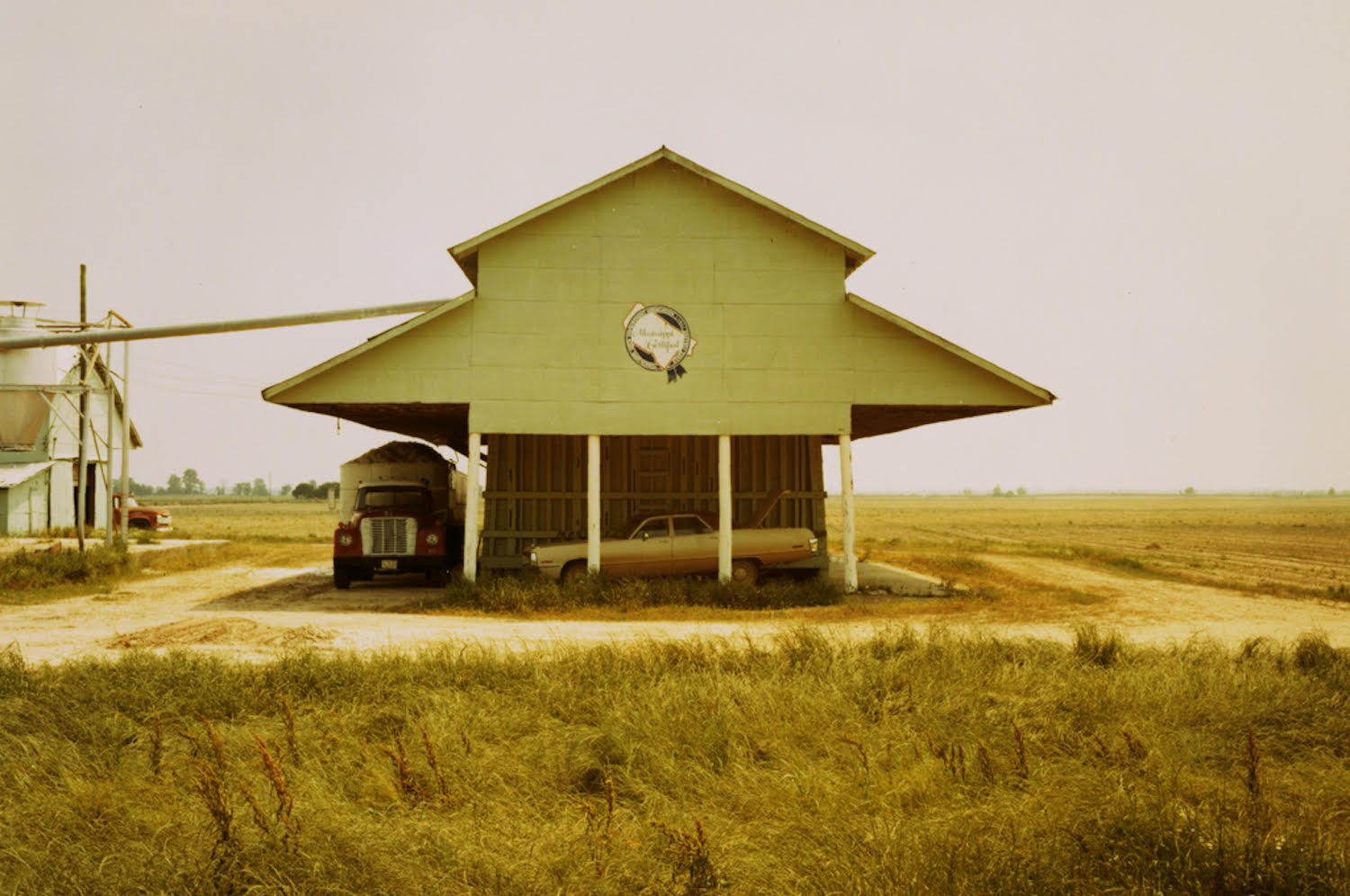A dreamy road trip through the Mississippi Delta
- Text by Miss Rosen
- Photography by William Eggleston

Hailing from Memphis, Tennessee and raised in Sumner, Mississippi, American photographer William Eggleston is a poet of the American South. His vivid images of daily life helped establish colour photography as a medium of fine art during the ’70s.
Gallerist Rebekah Jacob also grew up around the Mississippi Delta, and recalls seeing the photographer in her youth. “Eggleston was somewhat ethereal but evident in the Delta, cruising around and taking pictures,” she recalls.
“You would often see his car perched just off the road and sometimes spot him walking along the paved roads or wandering out in the fields. Some thought he was crazy, others didn’t care to wonder. But it was strange to see anything other than field hands or farmers speckled out in the middle of cotton fields. And there he was, sweeping a camera and capturing the soul of the land, in perfect aperture.”

Minnows (On Highway 61 through the Mississippi Delta), 1972

Farm in the Mississippi Delta, 1970
While many dealers and collectors chase Eggleston dye-transfer photographs, Jacob prefers to focus on his chromogenic work: the intimate, small format images the artist made while exploring rural towns along the Mississippi River. In the new exhibition, William Eggleston’s Snapshots — the c-print, Jacob spotlights these intuitive interpretations of the land they both share.
“Eggleston was a link from the early 20th century artists to the present, modernising the medium in terms of printing and the use of colour,” Jacob says. “Although innovating the medium, he carried the voices of the Delta with integrity, patience, and sensitivity. He photographed the place and its peoples by sweeping the camera, so it has always been fascinating to see ‘my land’ variously angled and tightly formatted – like riding in a car with your head titled against its window.”
Jacob met Eggleston while earning a Masters in Art History at the University of Mississippi, popularly known as “Ole Miss.” “Mr Eggleston arrived true to his reputation,” she remembers. “A southern aristocrat, he was dapper, wearing a high-end sports coat, buttoned shirt, and slacks. He was polite yet mercurial.”

Dolls, Memphis, Tennessee, 1972

Hanover Sign, Oxford, Mississippi, 1971
“He walked in with a small stack of photographs and placed them on a positioned table. He seemed to be magnetised by the piano, another mastered medium and passion. His innovative arrangement of classical music, played by memory with no score, echoed throughout the space so that few words could be heard, but our eyes were in sensory overload.”
Although many critics outside the South didn’t understand what Eggleston was doing at the time, Jacob recognises the significance of his work as a documentarian of a new typography of the South in the 1970s. “He worked to capture the loneliness, isolation and changes brought about by suburbs and other physicalities of American society and culture,” she says.
“New suburbia was descending upon the South at the time, and Eggleston expressed this changing South by focusing on parking lots, shopping malls, neon signs and other ordinary objects in a consumer world. Eggleston is considered a titan in the photography world – a photographer with a pioneering eye for capturing beauty in the ugly and mundane.”

Gulf Sign (Mississippi Delta) from Southern Suite, 1972

Untitled (Martin Luther King, Robert F. Kennedy, John F. Kennedy ; decanters in bar), 1972

Near Minter City and Glendora, Mississippi (Mississippi Delta), 1969-70
William Eggleston’s Snapshots — the c-print was on view at the Rebekah Jacob Gallery.
Follow Miss Rosen on Twitter.
Enjoyed this article? Like Huck on Facebook or follow us on Twitter.
You might like

Jake Hanrahan: “Boys can cry, but we don’t all fucking want to”
Hard Feelings — In the latest edition of our column on masculinity and fatherhood, Rob Kazandjian speaks to the conflict filmmaker-journalist and Popular Front founder about his childhood, the found family and community at his Muay Thai gym, and the “complete counterculture” of ‘no rules’ fighting.
Written by: Robert Kazandjian

Euphoric portraits of queer joy and resistance at Trans Pride Brighton
Let us piss — Now over a decade old, the event grew to become Europe’s largest trans pride march. In a year when trans rights have come under the microscope more than ever, we went to this year’s edition, finding grassroots unity and collective rage.
Written by: Ella Glossop

Remembering the radical anti-nuclear Greenham Women’s Peace Camp
Life at the Fence — In the early ’80s, a women’s only camp at an RAF site in Berkshire was formed to protest the threat of nuclear arms. Janine Wiedel’s new photobook revisits its anti-establishment setup and people.
Written by: Miss Rosen

A new documentary traces the rise, fall and cratering of VICE
VICE is broke — Streaming on MUBI, it’s presented by chef and filmmaker Eddie Huang, who previously hosted travel and food show Huang’s World for the millennial media giant.
Written by: Ella Glossop

Warm, tender photos of London’s amateur boxing scene
Where The Fire Went — Sana Badri’s new photobook captures the wider support networks and community spirit around the grassroots sport, as well as the significance of its competitions to the athletes who take part.
Written by: Isaac Muk

We are all Mia Khalifa
How humour, therapy and community help Huck's latest cover star control her narrative.
Written by: Alya Mooro

